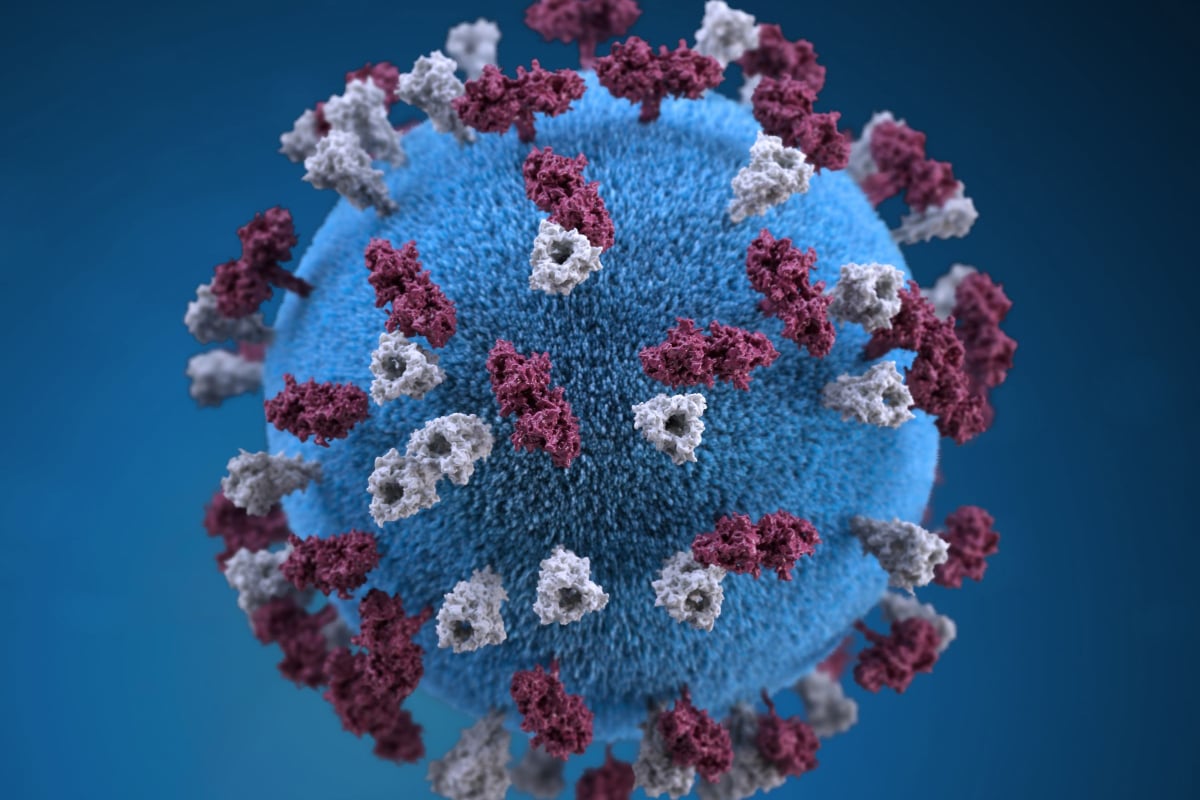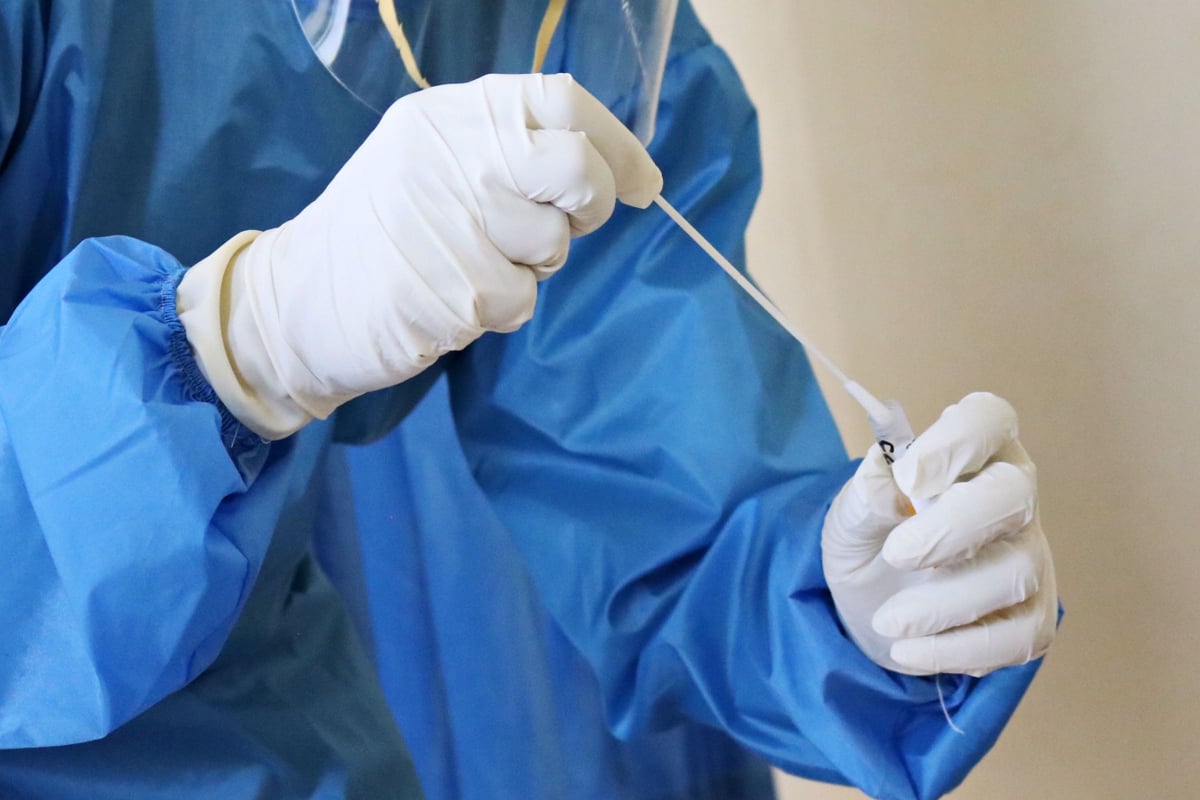Acute Respiratory Illnesses
COVID-19
The federal public health emergency declaration for COVID-19 ended in May 2023. Since then, Missoula Public Health’s role in COVID-19 has changed. Missoula Public Health does not offer COVID-19 testing. Individuals needing testing should reach out to local pharmacies and walk-in clinics.
For vaccine information, please visit our Clinic Services page.
For the latest guidance for prevention and treatment, please visit the CDC.
What are the symptoms of COVID-19?
COVID-19 most often causes respiratory symptoms that can feel much like a cold, the flu, or pneumonia. COVID-19 may attack more than your lungs and respiratory system. Other parts of your body may also be affected by the disease. Most people with COVID-19 have mild symptoms, but some people become severely ill.
The following list does not include all possible symptoms. Symptoms may change with new COVID-19 variants and can vary depending on vaccination status. Possible symptoms include:
- Fever or chills
- Cough
- Shortness of breath or difficulty breathing
- Sore throat
- Congestion or runny nose
- New loss of taste or smell
- Fatigue
- Muscle or body aches
- Headache
- Nausea or vomiting
- Diarrhea
How does COVID-19 spread?
COVID-19 spreads when an infected person breathes out droplets and very small particles that contain the virus. Other people can breathe in these droplets and particles, or these droplets and particles can land on others’ eyes, nose, or mouth. In some circumstances, these droplets may contaminate the surfaces they touch.
Anyone infected with COVID-19 can spread it, even if they do NOT have symptoms. COVID-19 can even spread from people to animals in some situations.
How can I prevent COVID-19?
There are many actions you can take to help protect you, your household, and your community from COVID-19. CDC’s Respiratory Virus Guidance provides actions you can take to lower the risk of COVID-19 transmission (catching and spreading COVID-19) and lower the risk of severe illness if you get sick.
What should I do if I think I have COVID-19?
Stay home and away from others (including people you live with who are not sick) if you have symptoms that aren’t better explained by another cause. Seek health care promptly for testing and/or treatment if you have risk factors for severe illness; treatment may help lower your risk of severe illness.
Who needs a COVID-19 vaccine?
Everyone ages 6 months and older should get the 2024–2025 COVID-19 vaccine. This includes people who have received a COVID-19 vaccine, people who have had COVID-19, and people with long COVID.
Importance of staying up to date
- Getting the 2024–2025 COVID-19 vaccine is important because:
- Protection from the COVID-19 vaccine decreases with time.
- Immunity after COVID-19 infection decreases with time.
- COVID-19 vaccines are updated to give you the best protection from the currently circulating strains.
- Getting the 2024–2025 COVID-19 vaccine is especially important if you:
- Never received a COVID-19 vaccine
- Are ages 65 years and older
- Are at high risk for severe COVID-19
- Are living in a long-term care facility
- Are pregnant, breastfeeding, trying to get pregnant, or might become pregnant in the future.
- Want to lower your risk of getting Long COVID
Covid Wastewater Data
Flu
Flu is a contagious respiratory illness caused by influenza viruses that infect the nose, throat, and sometimes the lungs. It can cause mild to severe illness, and at times can lead to death. The best way to prevent flu is by getting a flu vaccine each year.
What are the symptoms of flu?
Flu can cause mild to severe illness, and at times can lead to death. Flu symptoms usually come on suddenly. People who have flu often feel some or all of these signs and symptoms:
- Fever* or feeling feverish/chills
- Cough
- Sore throat
- Runny or stuffy nose
- Muscle or body aches
- Headaches
- Fatigue (tiredness)
- Some people may have vomiting and diarrhea, though this is more common in children than adults.
*It’s important to note that not everyone with flu will have a fever.
Not everyone with flu has symptoms. Some people with influenza virus infections do not develop any symptoms at all. A household study conducted during the 2017-2023 flu seasons found that 8 percent of people who tested positive for flu did not have symptoms.
How is flu spread?
You may be able to spread flu to someone else before you know you are sick, as well as when you are sick with symptoms.
Most experts believe that flu viruses spread mainly by tiny droplets made when people with flu cough, sneeze, or talk. These droplets can land in the mouths or noses of people who are nearby. Less often, a person might get flu by touching a surface or object that has flu virus on it and then touching their own mouth, nose or possibly their eyes.
- People with flu are most contagious during the first three days of their illness.
- Some otherwise healthy adults may be able to infect others beginning one day before symptoms develop and up to five to seven days after becoming sick.
- Some people, including young children and people with weakened immune systems, may be contagious for longer periods of time.
How can I prevent flu?
The first and most important step in preventing flu is to get a flu vaccine each year. Flu vaccine has been shown to reduce flu-related illnesses and the risk of serious flu complications that can result in hospitalization or even death. CDC also recommends everyday preventive actions, including:
- Staying away from people who are sick (distancing)
- Covering coughs and sneezes
- Frequent handwashing
- Taking steps for cleaner air
These preventative steps help slow the spread of germs that cause respiratory (nose, throat, and lungs) illnesses like flu.
What should I do if I think I have flu?
- Take flu antiviral drugs, if a health care provider prescribes them.
- Take everyday precautions to protect others while sick.
- Stay home until you are better.
Stay home and avoid contact with other people except to get medical care. You can go back to your normal activities when, for at least 24 hours, both are true:
- Your symptoms are getting better overall, and
- You have not had a fever (and are not using fever-reducing medication).*
If you have flu symptoms and are in a group at higher risk of serious flu-related complications, or if you are very sick or worried about your illness, contact your health care provider.
While your doctor may test you for flu, not everyone who goes to the doctor with flu-like symptoms will be tested. After evaluating you, your doctor may choose to diagnose you with flu without the need for testing based on your symptoms and his or her own clinical judgement.
Why should I get a flu vaccine?
Influenza (flu) is a potentially serious disease that can lead to hospitalization and sometimes even death. Every flu season is different, and flu can affect people differently, but during typical flu seasons, millions of people get flu, hundreds of thousands of people are hospitalized and thousands to tens of thousands of people die from flu-related causes. Flu can mean a few days of feeling bad and missing work, school, or family events, or it can result in more serious illness.
Flu vaccination can keep you from getting sick with flu.
- Flu vaccine prevents millions of illnesses and flu-related doctor’s visits each year. For example, during 2019-2020, the last flu season prior to the COVID-19 pandemic, flu vaccination prevented an estimated 7 million influenza illnesses, 3 million influenza-associated medical visits, 100,000 influenza-associated hospitalizations, and 7,000 influenza-associated deaths in the United States.
- During seasons when flu vaccine viruses are similar to circulating flu viruses, flu vaccine has been shown to reduce the risk of having to go to the doctor with flu by 40% to 60%.
How do flu vaccines work?
Influenza (flu) vaccines cause antibodies to develop in the body about two weeks after vaccination. These antibodies provide protection against infection with the influenza viruses that are used to make vaccine. The seasonal flu vaccine protects against the influenza viruses that research suggests will be most common during the upcoming season. These include three different main groups of influenza Type A and B viruses.
Vaccines and People with Egg Allergies
People with egg allergy may receive any vaccine (egg-based or non-egg-based) that is otherwise appropriate for their age and health status.
Who should get vaccinated?
Everyone 6 months and older should get a flu vaccine every season with rare exceptions. Vaccination is particularly important for people who are at higher risk of serious complications from influenza.
Pertussis (Whooping Cough)
Whooping cough is a respiratory illness caused by a type of bacteria called Bordetella pertussis. The disease is only found in humans.
Whooping cough bacteria attach to the cilia (tiny, hair-like extensions) that line part of the upper respiratory system. The bacteria release toxins (poisons), which damage the cilia and cause airways to swell.
What are the symptoms of whooping cough?
Early Symptoms
It usually takes 5 to 10 days for symptoms to appear after exposure to the bacteria that cause whooping cough. Sometimes symptoms don’t develop for as long as 3 weeks.
Appears like a common cold. Whooping cough appears similar to a common cold early on. Healthcare providers often don’t suspect or diagnose it until more severe symptoms appear.
Early symptoms can last for 1 to 2 weeks and usually include:
- Runny or stuffed-up nose
- Low-grade fever (less than 100.4°F)
- Mild, occasional cough
Babies may struggle to breathe. Many babies with whooping cough don’t cough at all. Instead, they may have apnea (life-threatening pauses in breathing). The apnea may cause cyanosis (to turn blue) or they may struggle to breathe.
For some babies, whooping cough may seem like a common cold for the entire illness, not just at the beginning.
Later Symptoms
Rapid, violent, and uncontrolled coughing fits
One to 2 weeks after the first symptoms start, people may develop paroxysms, known as coughing fits. These coughing fits usually last 1 to 6 weeks but can last for up to 10 weeks. The cough generally gets worse and becomes more common as the illness continues. Coughing fits can cause people to
- Make a high-pitched “whoop” when they inhale after a coughing fit
- Vomit during or after coughing fits
- Feel very tired after the fit, but usually seem well in-between fits
- Have difficulty sleeping at night
- Struggle to breathe
- Fracture (break) a rib
Those who get these coughing fits say it’s the worst cough of their lives.
How does whooping cough spread?
The bacteria that cause whooping cough spread easily from person to person through the air. When a person with whooping cough sneezes or coughs, they release small particles with the bacteria in them. Other people can then breathe in the bacteria. These bacteria can spread when people spend a lot of time together or share breathing space.
People can be contagious for weeks
People can spread the bacteria from the start of symptoms and for at least 2 weeks after coughing begins. Taking antibiotics early in the illness may shorten the amount of time someone’s contagious.
People can unknowingly spread the bacteria
Some people have mild symptoms and don’t know they have whooping cough, but they can still spread the bacteria to others. Many babies who get whooping cough are infected by older siblings, parents, or caregivers who don’t know they have it.
How can I prevent whooping cough?
The best way to prevent whooping cough is to get vaccinated. CDC recommends whooping cough vaccination for everyone.

Antibiotics
Preventive antibiotics are also known as postexposure antimicrobial prophylaxis (PEP). These are medicines given to someone who has been exposed to harmful bacteria to help prevent them from getting sick. Some people should receive antibiotics to prevent them from getting sick if they have been around someone with whooping cough. If you’ve been exposed to someone with whooping cough, talk to a healthcare provider about preventive antibiotics. A healthcare provider or health department generally decides who should get preventive antibiotics.
Good hygiene
CDC recommends practicing good hygiene to help prevent the spread of bacteria and viruses that can cause many respiratory illnesses.
Re-infection
People who’ve had whooping cough have some immunity to future whooping cough infections. However, getting sick with whooping cough doesn’t provide lifelong protection.
What should I do if I think I have whooping cough?
Whooping cough can be difficult to diagnose because the signs and symptoms are often similar to other respiratory illnesses. It can be helpful to know if you’ve been in contact with someone who has whooping cough.
Healthcare providers can diagnose whooping cough by doing a
- History of typical signs and symptoms
- Physical exam
- Laboratory test of a mucus sample from the back of the throat
- Blood test
Treatment and recovery
It’s very important to treat whooping cough early, before coughing fits begin. Healthcare providers generally treat whooping cough with antibiotics. Further treatment in the hospital may be required if symptoms are serious.


